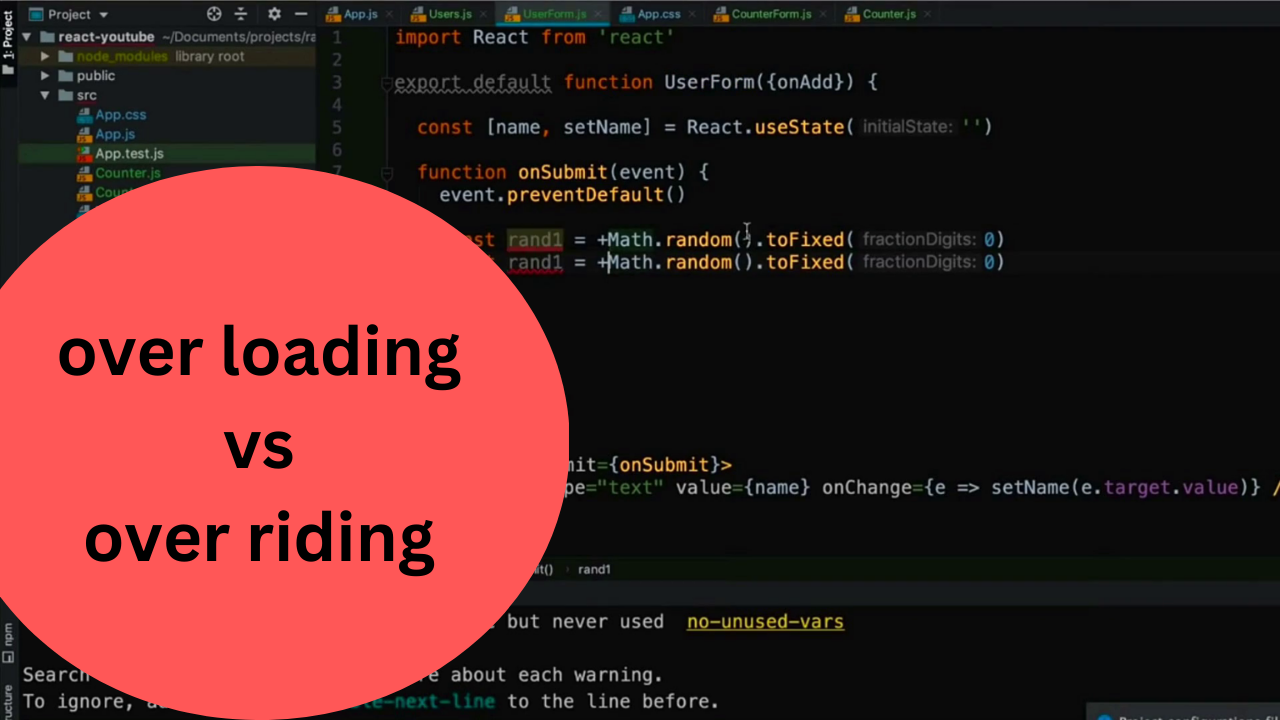
Method Overloading vs. Method Overriding in Java: A Comprehensive Guide
When you’re learning Java, you’ll come across lots of terms that might seem confusing at first. Two of those terms are method overloading and method overriding. Though they sound similar, they’re like apples and oranges in the world of Java. Let’s dive into what each of these terms means, how they’re different, and why they’re super important for Java developers to know. By the end of this guide, you’ll have a clear understanding of method overloading and method overriding, armed with examples to help these concepts click.
What is Method Overloading in java?
Imagine you’re in a kitchen. You’ve got one tool that can do multiple things: it can slice, dice, and even peel. That’s kind of what method overloading in Java is like. It’s when you have multiple methods in the same class with the same name but different parameters. These parameters can vary in type, number, or both. The key here is that Java allows these methods to coexist because each has its unique signature (name + parameters).
Why Use Method Overloading in java?
Method overloading makes your code cleaner and more readable. It lets you perform different actions with the same method name, reducing complexity. Think of it as having a Swiss Army knife instead of carrying around a bunch of single-purpose tools.
What is Method Overriding in java?
Now, let’s switch scenarios. Imagine you’re using an app that’s been updated. The update doesn’t change the app’s name but improves its features. In Java, method overriding is somewhat similar. It occurs when a subclass (or child class) has a method with the same name, return type, and parameters as a method in its superclass (or parent class). The method in the subclass “overrides” the one in the superclass, providing a specific implementation.
Why Use Method Overriding in java?
Method overriding lets you define a behavior that’s specific to the subclass, allowing for dynamic polymorphism. This means you can call methods on objects without knowing their exact types, making your code more flexible and reusable.
Key Differences
To sum up, here are the main differences between method overloading and method overriding:
- Definition: Overloading occurs within the same class through different parameter lists. Overriding happens between superclass and subclass with the same method signature.
- Purpose: Overloading increases readability with one method name doing various tasks. Overriding provides specific implementations of methods inherited from a superclass.
- Parameters: Overloading methods have different parameters. Overriding methods have the same parameters.
- Polymorphism: Overloading is an example of compile-time (or static) polymorphism, and overriding is an example of runtime (or dynamic) polymorphism.
Examples in Code
To make things crystal clear, let’s look at some simple Java examples.
Method Overloading Example in java
class KitchenTool {
void action(String item) {
System.out.println("Slicing " + item);
}
void action(String item, int thickness) {
System.out.println("Slicing " + item + " with thickness " + thickness);
}
}Method Overriding Example in java
class App {
void update() {
System.out.println("App is updating...");
}
}
class MySpecialApp extends App {
@Override
void update() {
System.out.println("MySpecialApp is updating with new features!");
}
}And there you have it! Method overloading and method overriding are like two sides of the same coin in Java. They both play crucial roles in making your code more efficient, readable, and capable of handling a variety of tasks with ease. Remember, overloading is all about giving you multiple ways to use a method within a class, while overriding lets subclasses tailor the inherited methods to their needs. So, next time you’re coding in Java, think about how you can use these techniques to streamline your code. Happy coding!
FAQs
Q: Can method overloading and method overriding be used at the same time?
A: Yes, they can be used in the same program but not for the same method in the same class hierarchy. Overloading applies to methods in the same class, and overriding involves methods across a superclass and its subclasses.
Q: Is it possible to overload a method with the same number of parameters but different return types?
A: No, method overloading considers the method’s name and its parameter list. The return type is not part of the method signature, so it cannot be used to differentiate overloaded methods.
Q: How does Java determine which overloaded method to call?
A: Java uses the type and number of arguments passed to the method call to determine which overloaded method to execute. This decision is made at compile time.
it’s here C++ vs java has to know.


